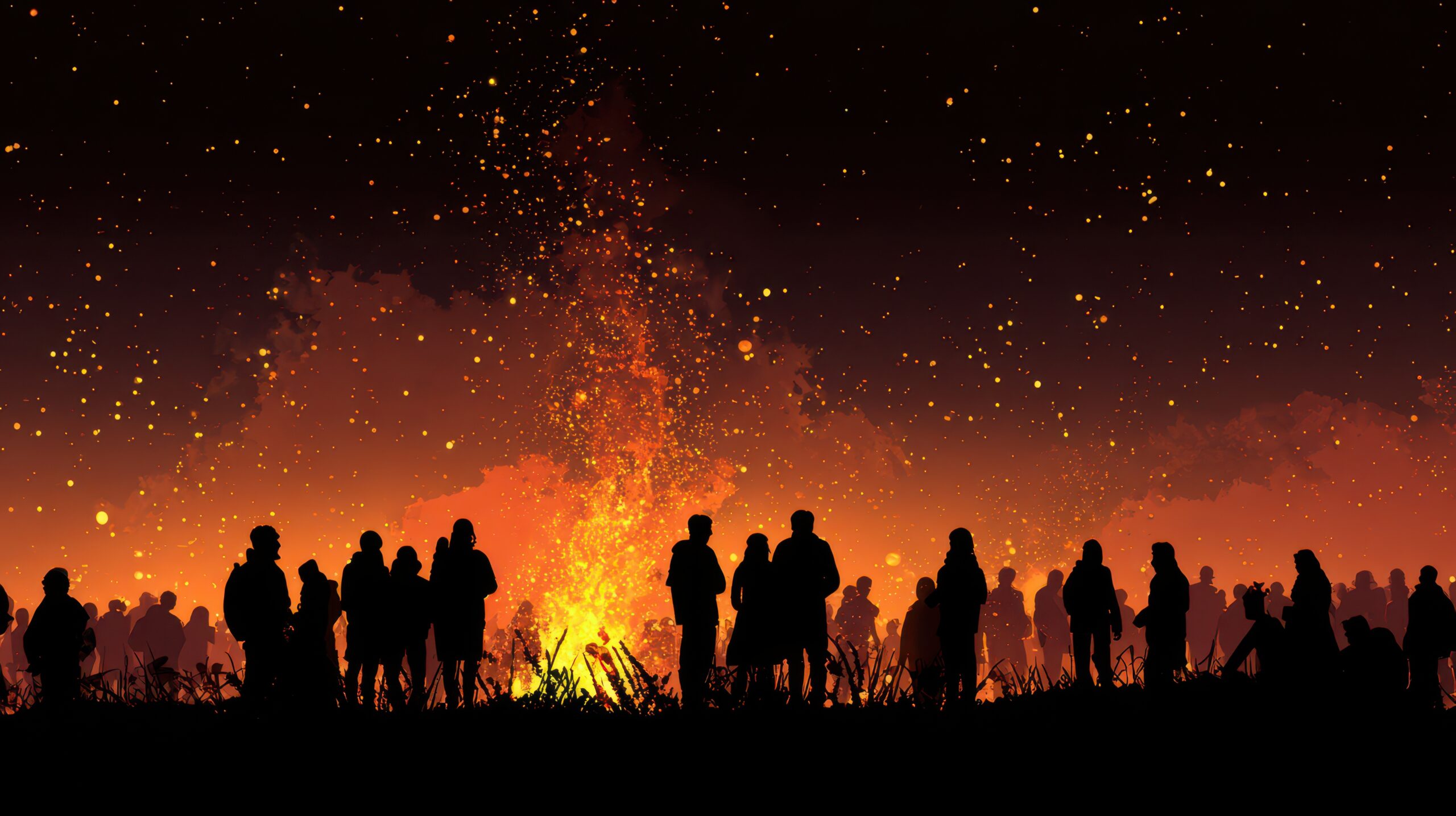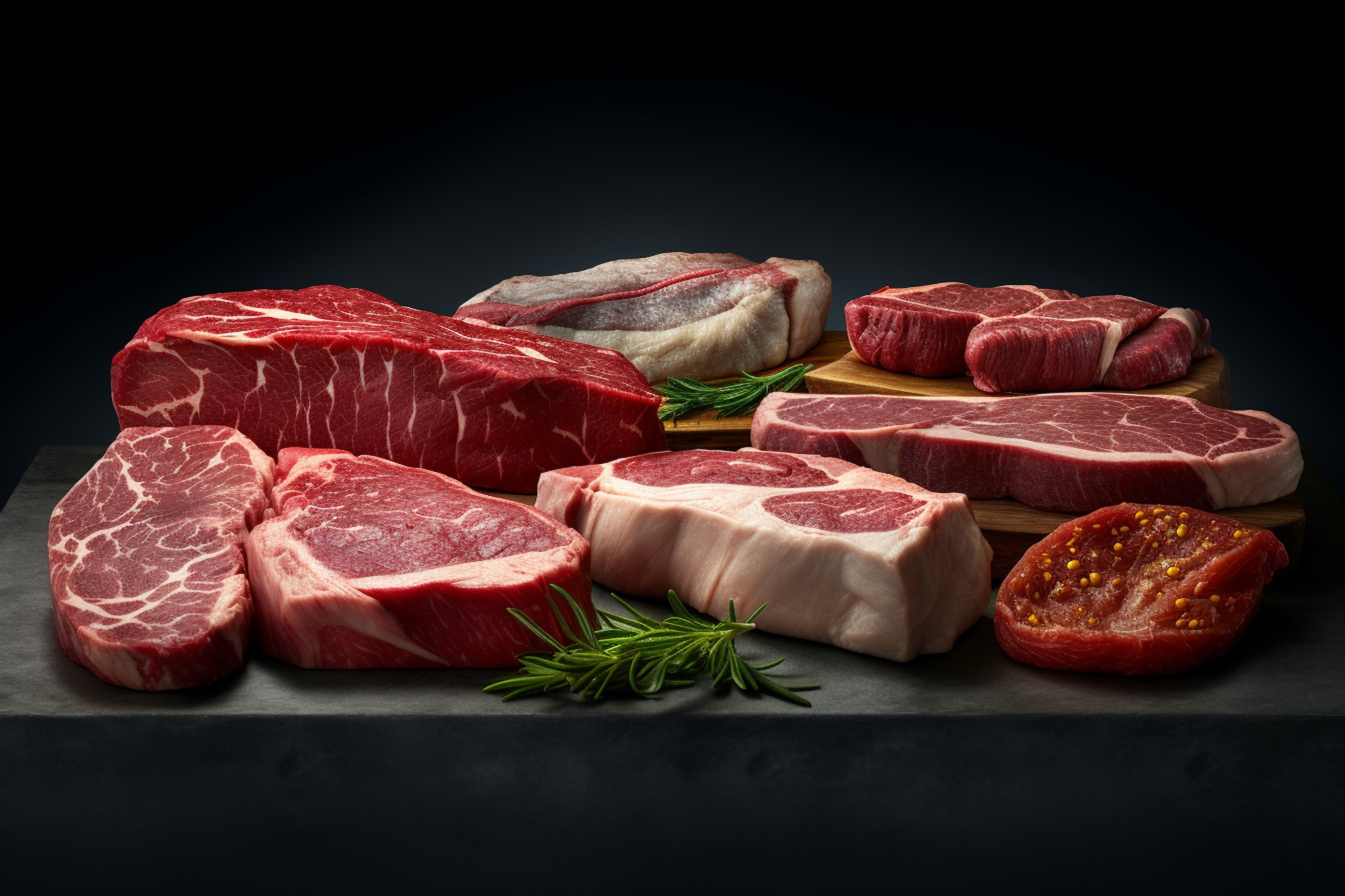 Although it's been 80 degrees here in Raleigh lately, the mornings are getting brisk, and you can sense fall in the air. Some trees are starting to turn, and a constant morning dew covers the grass.
Although it's been 80 degrees here in Raleigh lately, the mornings are getting brisk, and you can sense fall in the air. Some trees are starting to turn, and a constant morning dew covers the grass.
Aside from pumpkin-spiced everything and the neighborhood competition about who can overdecorate their houses for Halloween, there is a distant scent of bonfires. Living in an HOA means that very few people have fire pits, but surrounding our soon-to-be 500-home subdivision are homes with full-acre lots that frequently burn leaves and wood.
Since there has been a lack of rain this year, they must be closely watched and tended to to prevent fires from spreading. In incorporated areas, fires are illegal. But there is a scent in the air that says fall is here.
Bonfire Principles
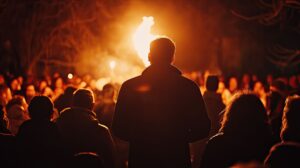
Bonfires can be mesmerizing, especially big ones. But small ones, like a fire pit, are meant to be enjoyed by a small group of people.
Both require fuel (wood and oxygen), a need to be started (kindling and a spark or flame), a solid base of non-flammable materials (dirt or stone), and tools to be maintained (poker, shovel, and a bucket of water).
The thing about bonfires is that they are designed to attract and engage crowds of people. You can find them on beaches, campgrounds, open fields, at fall festivals, in community parks, and at sporting events.
They are usually regulated by local government officials when a crowd of people will be attending. They cost a good chunk of change to set up and maintain.
A bonfire is big, bold, and usually part of a larger event or celebration where a fire pit is designed for smaller, safer, and more frequent gatherings—perfect for relaxing or cooking in your yard.
Fire Pit Principles
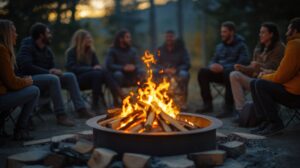 Fire pits utilize all the essential elements of a bonfire (fuel, kindling, spark or flame, a solid base, and tools for maintenance), but on a much smaller and more intimate scale.
Fire pits utilize all the essential elements of a bonfire (fuel, kindling, spark or flame, a solid base, and tools for maintenance), but on a much smaller and more intimate scale.
Fire pits are easier to build and maintain than a huge fire in an open field. While a bonfire is designed to attract and engage crowds, sitting at a fire pit usually requires an invitation to a small group of friends and neighbors. With a bonfire, you probably have a group of people who don't know or interact with each other, but with a fire pit, everyone generally knows each other or has something in common.
Bonfires need to be planned in advance and require a team of people to build and maintain, whereas a fire in a pit is usually built and maintained by a small group (usually the property owner).
So I ask you, are your marketing efforts more like a bonfire or a fire pit?
Lighting a Fire With Your Marketing

The goal of any marketing is to attract people to make a purchase from your business. Although all of us are playing with fire, some want to build a big one that attracts a crowd, while others are trying to invite and entertain a small group.
Bonfire marketing requires a lot of planning, demands a larger amount of resources, and typically lasts longer. With all that said, it's hard to change locations, dates, and the audience it attracts. It usually burns for a finite amount of time because it's hard to add more logs to the fire.
Fire pit marketing is much more flexible. It can change dates and times if it rains, takes fewer resources, and can be as long or short as you want. You can light a few logs or keep adding to the fire if people stick around.
When it comes to a marketing bonfire, it's challenging to keep people engaged for a long time, as it's too large to accommodate tables, drinks, and other engaging activities. If you have entertainment, people will have to choose between the stage and the fire. Finally, the lead time to do another takes work.
With a fire pit, you can have chairs close by, have drinks, and play music or break out the instruments for an impromptu performance. It's much more intimate, flexible, and repeatable if your crowd finds it enjoyable.
In other words, bonfire marketing is more of an event than a party. Both are enjoyable, but one is more flexible, repeatable, and builds relationships.
What's the Marketing Difference
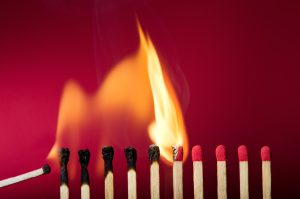 Bonfire Marketing is designed to attract the largest audience possible. It's also harder to identify who responds and how much engagement they will give you. Fire Pit Marketing is designed to build and strengthen relationships with a small group of engaged people.
Bonfire Marketing is designed to attract the largest audience possible. It's also harder to identify who responds and how much engagement they will give you. Fire Pit Marketing is designed to build and strengthen relationships with a small group of engaged people.
The difference between a bonfire and a fire pit:
- Fuel – Bonfires require larger logs, which cost more money but also take more resources to deliver, arrange, and ignite.
- Kindling – Once lit, it's harder to add more to a bonfire, so it takes more planning and expertise. With a fire pit, just add a log.
- Spark – A bonfire often requires an accelerant, whereas a fire pit just needs newspaper and a lighter.
- Tools – A bonfire often requires tractors and a large hose to extinguish, whereas a stick and a bucket are good enough for a fire pit.
- Base – A bonfire requires much more open space than a smaller pit, which can be done in your backyard or on a home patio.
The difference between Bonfire Marketing and Fire Pit Marketing:
- Fuel – It's money and staff. Also, it's your content. Do you need a lot (to reach more people) or less?
- Kindling – It's the distribution. What channels and frequency do you need to reach your audience?
- Spark – Large audiences have varying issues, while smaller ones can be more targeted. How many problems are you trying to communicate?
- Tools – Large audiences are harder to control and manage, while smaller ones can be done with a CRM, email program, and social tools.
- Base – Both require a home base (website), but a larger audience may require sales staff and e-commerce to meet diverse buying options and needs.
If your products or services have a higher turnover rate or increased purchase frequency, you may need to employ bonfire tactics to reach them and keep them engaged.
If your client base is built on relationships, then you must focus more on nurturing and less on attracting a new supply of customers and reactivating their loyalty over time.
Closing Thought
 Just as with building any fire, using quality wood and better kindling makes it easier and produces better flames. Your content is the fuel.
Just as with building any fire, using quality wood and better kindling makes it easier and produces better flames. Your content is the fuel.
Larger fires require more planning, resources, and a greater amount of fuel. They are also inflexible in terms of location and occurrence.
Smaller fire pits are more flexible and require fewer people and resources, but they also foster better relationships.
If you have a larger audience, you must ensure that you cater to the varying needs of all your target audiences while aiming to attract a diverse range of buyers. If you have a few smaller and more relational audiences, you may need to have multiple fire pits if you have a varied audience that requires different messaging.
Either way, ensure it's safe (a quality home base) and your content aligns with the expectations of your audience.
______________________________
Comment below and share your thoughts, ideas, or questions about business-to-business sales and marketing today! Do you have a sales or marketing communications strategy that works for you? What tips or techniques can you share that work for you and your business?
To learn more about this and other topics on B2b Sales & Marketing, visit our podcast website at The Bacon Podcast.
